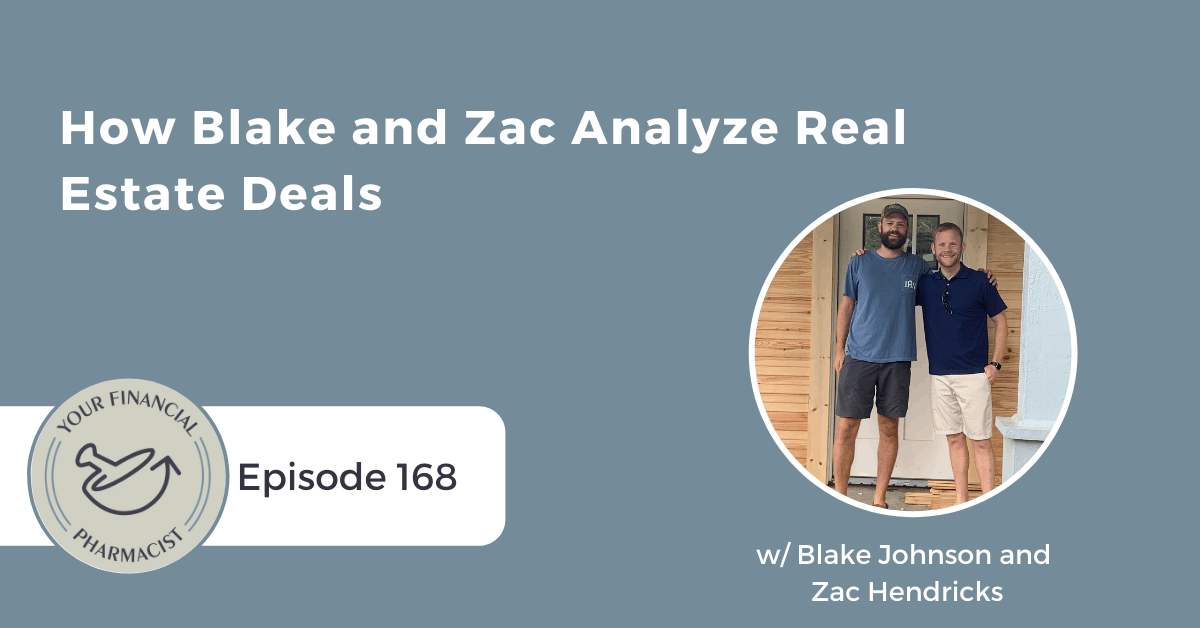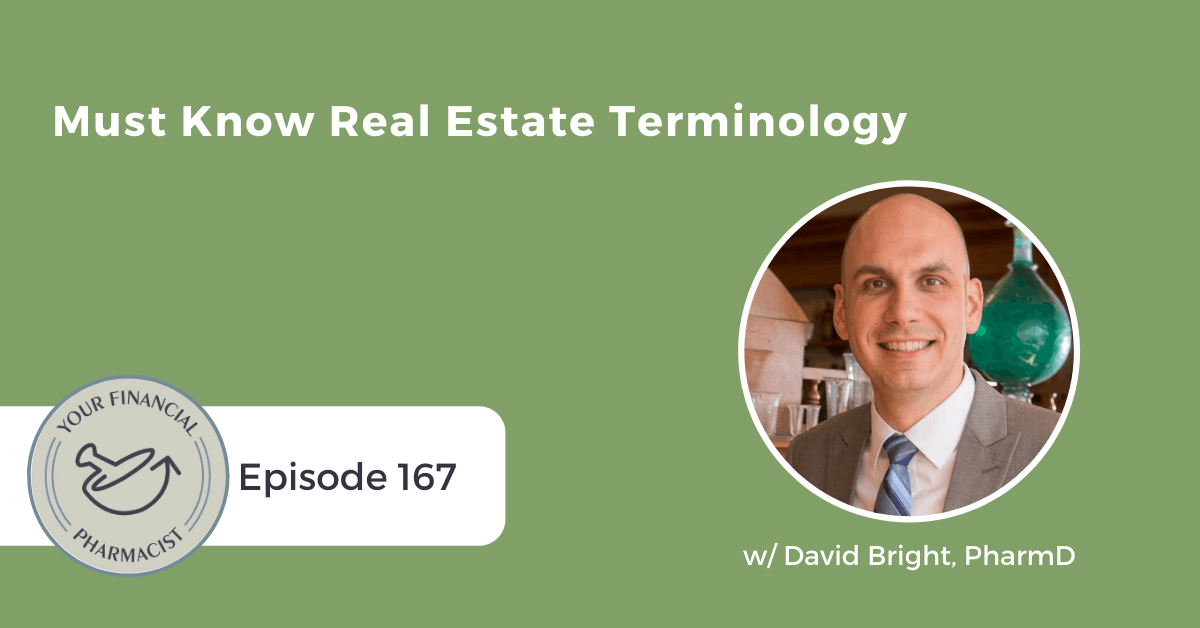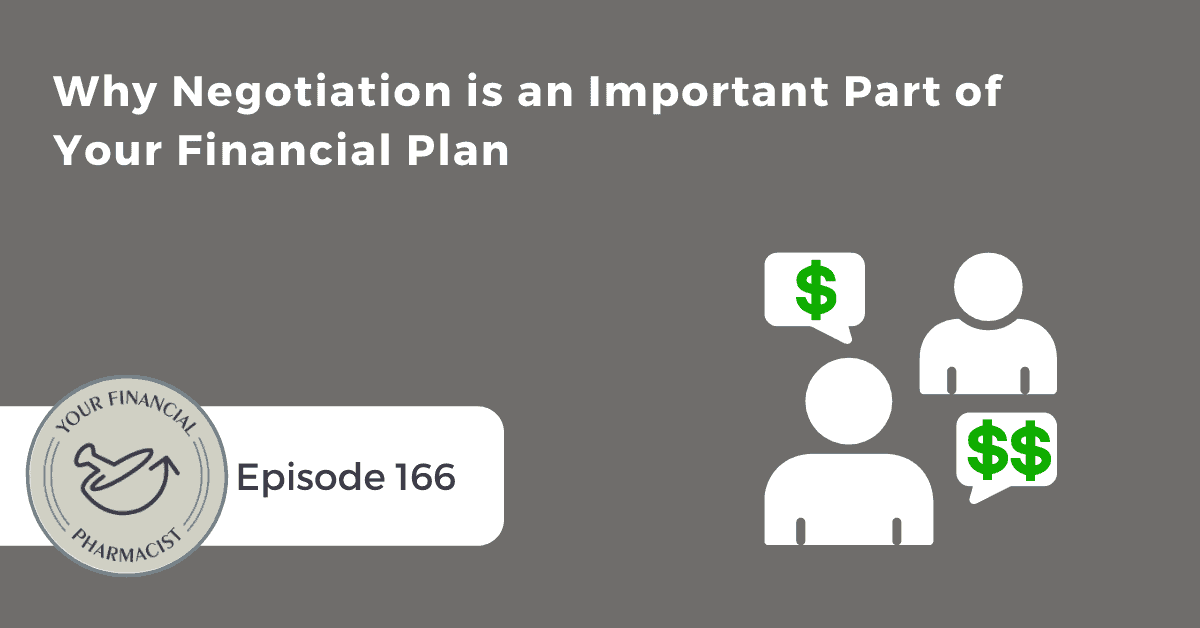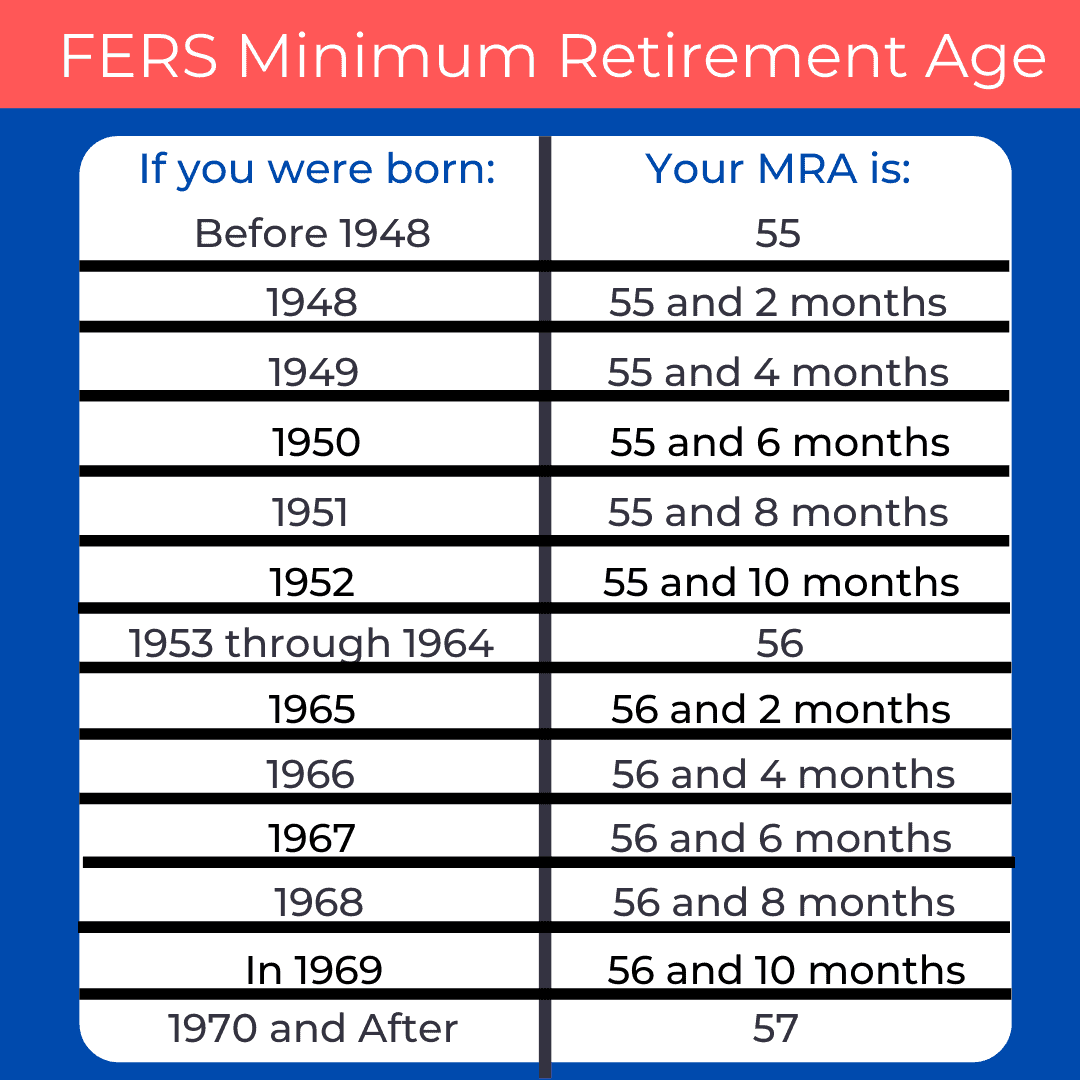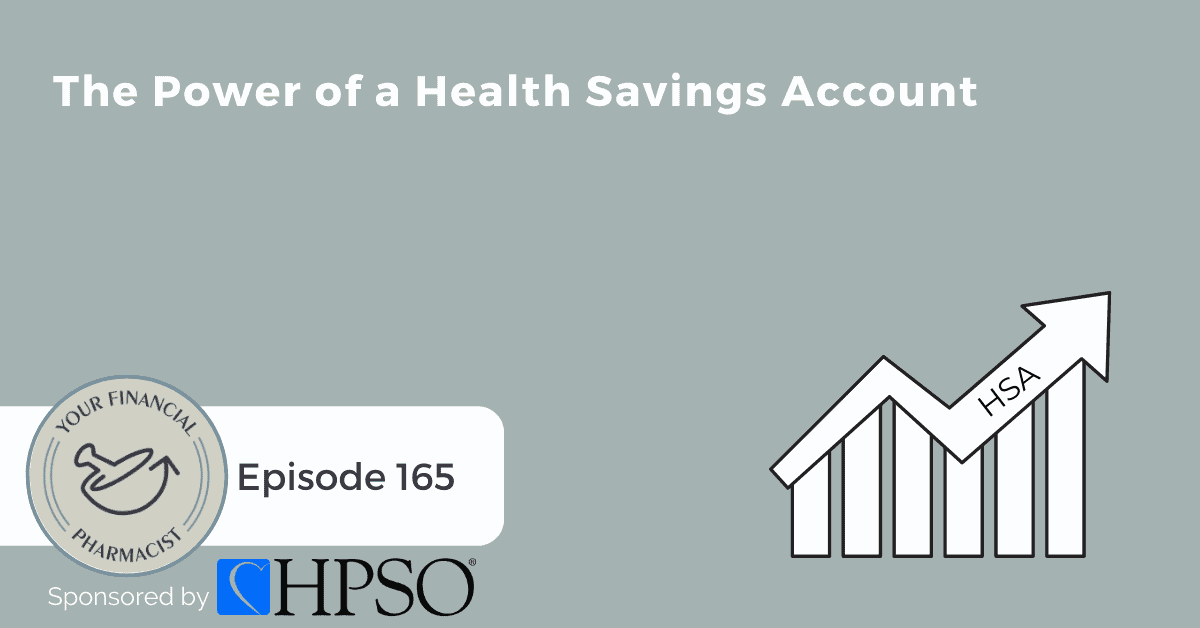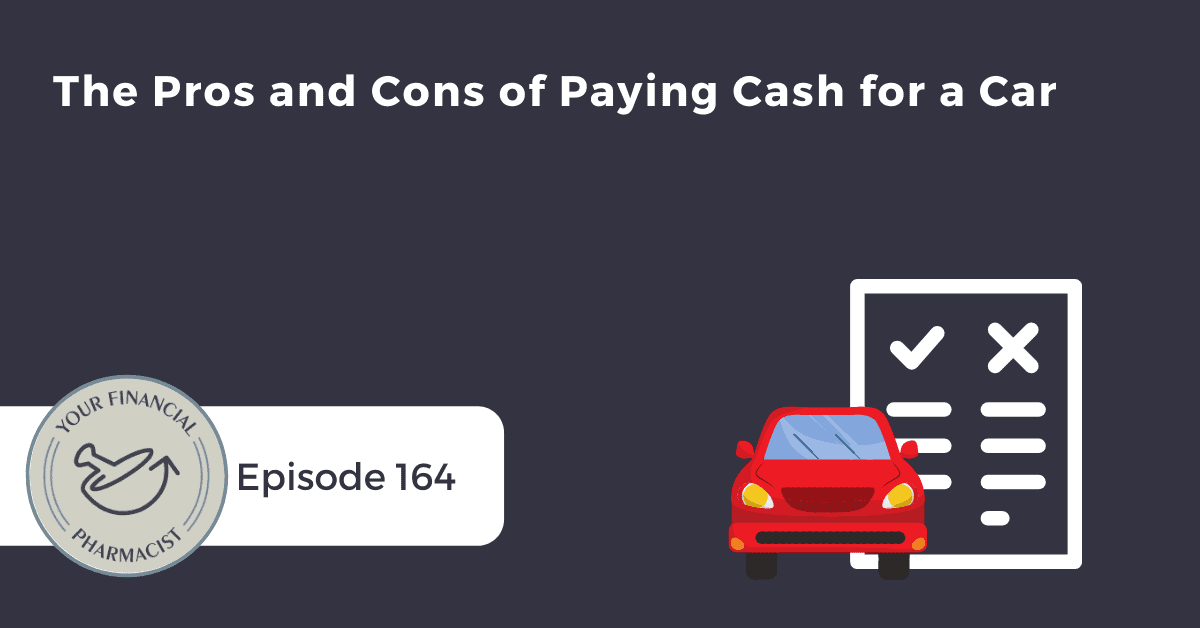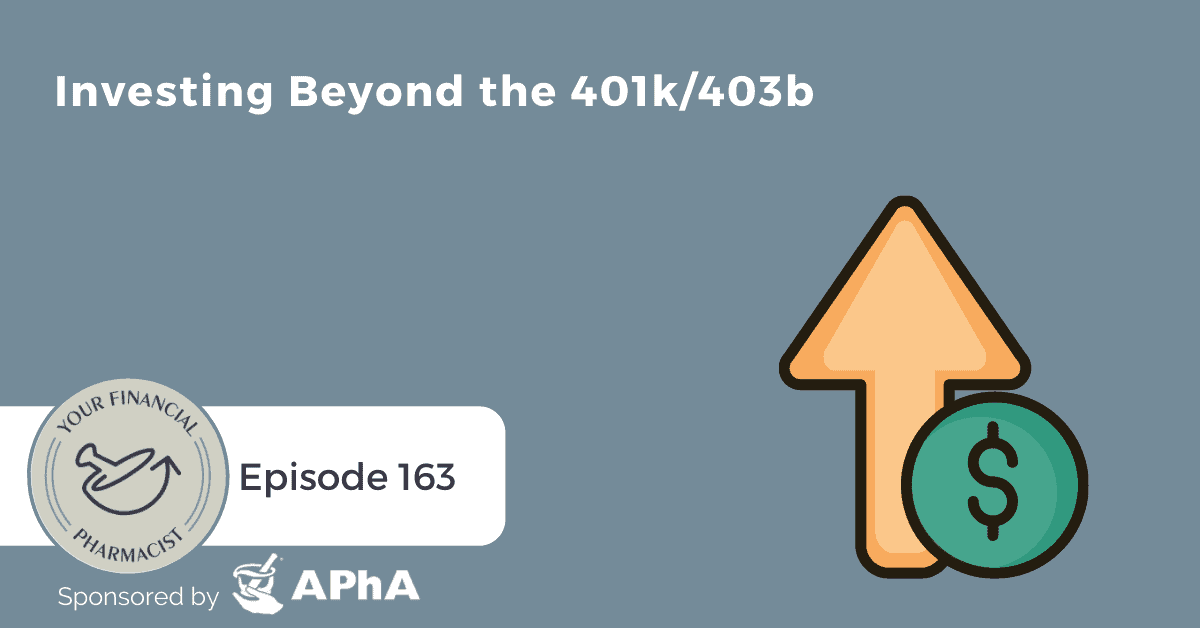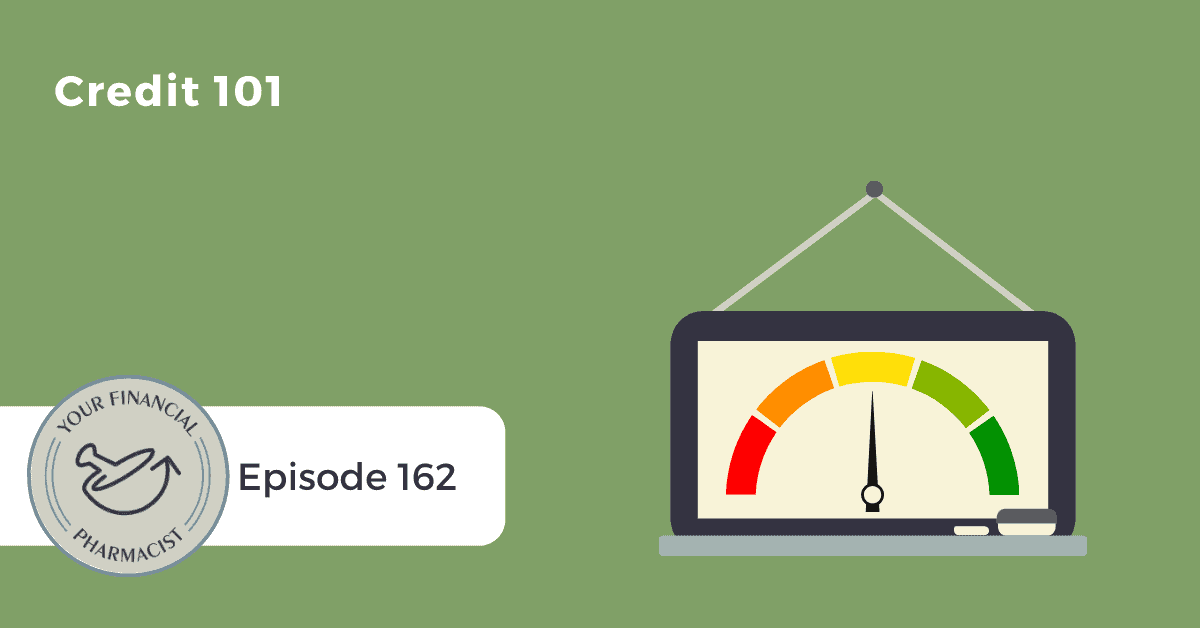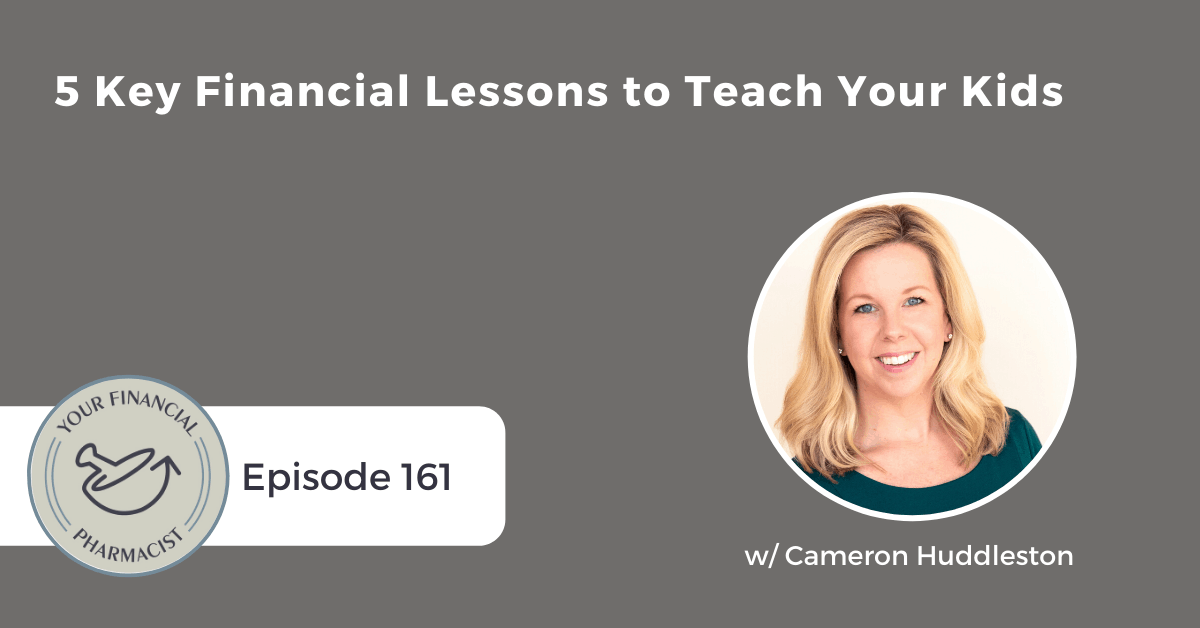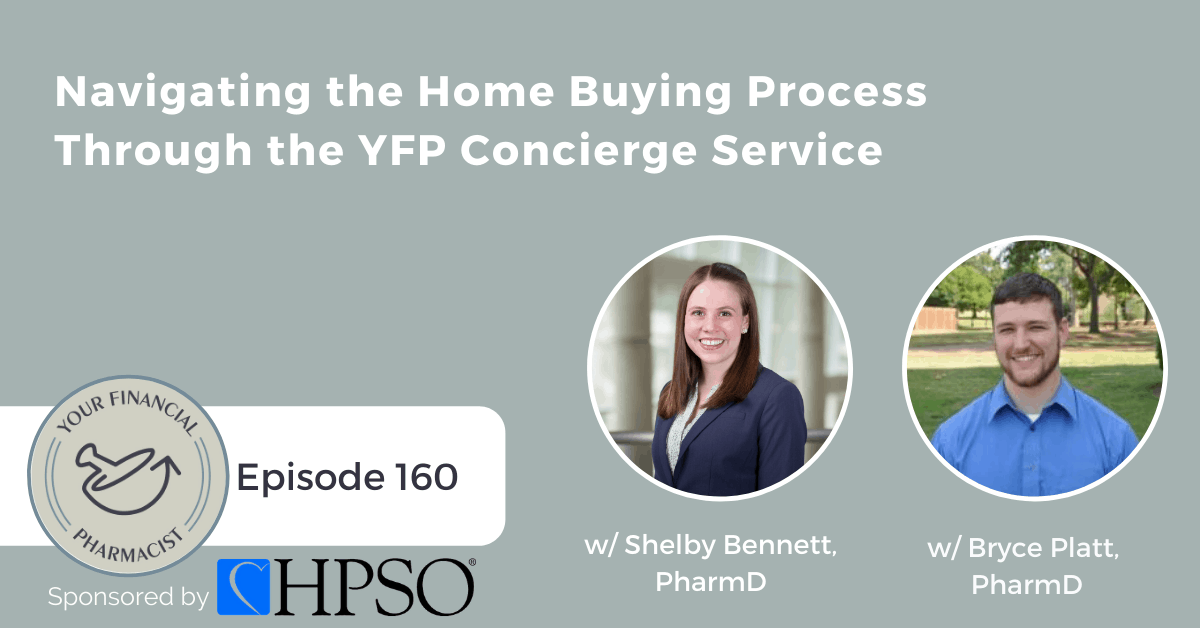How Blake and Zac Analyze Real Estate Deals
Blake Johnson and Zac Hendricks talk about how they joined forces to build a successful real estate portfolio and investment strategy. They talk about their individual roles when investing in properties, the make-up of their current portfolio, and why they chose to focus on real estate investing. Blake and Zac lay out all the secrets on how to analyze real estate deals and break down the numbers on two of their own investment properties.
About Today’s Guests
Blake Johnson is a 2013 graduate of the University of Arkansas for Medical Sciences. Upon graduation, he married his wife Kristyn and he began working in a small town independent pharmacy. He worked there for 2 years and is now working in Conway, Arkansas at a local independent pharmacy. Upon graduation, Blake decided that paying off student loans would be a top priority, while still being able to travel and save for his retirement. After three and a half years, he was able to pay off his and his wife’s student loans. Since then, Blake has been able to increase his savings and start purchasing rental property. In his spare time, he enjoys traveling as much as he can and teaching others about finances.
Zac Hendricks is a 2013 Bachelor’s of Business graduate from University of Central Arkansas with an emphasis on Innovation and Entrepreneurship. Zac worked as an intern for a financial advising firm while finishing his degree at UCA. This is when he bought his first property. Upon graduation Zac got a job working in logistics at Maverick Transportation. While moving up in the ranks at Maverick he and his wife Mav purchased 7-8 more properties which eventually led to their finding financial freedom to change careers and working in the family business—Hendricks Remodeling. Zac and Mav find their most joy in using their business skills to fund missionaries in the 10/40 window and expanding the Kingdom of God.
Summary
Blake Johnson and Zac Hendricks met 7 years ago at a church they were both attending and decided to join forces as partners in real estate investing. Blake handles the financing and acquisition of properties, analyzes numbers and focuses on networking and finding deals. Zac assesses the homes with a quick inspection to determine rehab costs and rehabs the properties. They run numbers together to see if the deal is a good one. Zac’s wife manages the properties. Together they own 14 rental properties and a lot. They are currently renting 13 of the properties and are in the process of rehabbing one.
Blake breaks down their process for analyzing real estate deals and shares that there are several areas that need to be looked at, including accounting for capital expenditures, vacancy, and property management. Blake and Zac share the numbers from two very different real estate properties they purchased and the rehab process for each.
Mentioned on the Show
- PolicyGenius: Shop for Life and Disability Insurance
- YFP 082: Debt Free Theme Hour with the Teacher and the Pupil w/ Joe Baker and Blake Johnson
- Hendricks Remodeling
- BiggerPockets
- The Book on Estimating Rehab Costs by J. Scott
- BiggerPockets Blog
- BiggerPockets Podcast
- The Top 20 Real Estate Books Every Investor Should Read – A Free Guide from BiggerPockets
- Books by Brandon Turner of BiggerPockets
- Rich Dad, Poor Dad: What the Rich Teach Their Kids that the Poor and Middle Class Do Not! by Robert T. Kiyosaki
- Think and Grow Rich by Napoleon Hill
- Real Estate Rookie Podcast
Episode Transcript
Tim Ulbrich: Blake and Zac, thanks for joining the show, and welcome to the podcast.
Blake Johnson: Good to be on here.
Zac Hendricks: Yeah, hey.
Tim Ulbrich: Appreciate you guys taking time. Excited to dig into this topic as we’ve been talking on the show for some time now wanting to bring more real estate investing content and happy to do that with Blake, who was on the show, Episode 082, with the ultimate mentor, Joe Baker, to talk about how he and his wife paid off $150,000 of student loans in 3.5 years. So excited to have him back on the show to talk about another part of his journey as real estate investing. And we’re also going to have his partner in real estate investing, Zac, join us to talk about how they work together, how they collaborate, what are their goals related to real estate investing, and my hope is as we have with other stories, that those that are interested and just hearing this for the first or second time, learning more, or perhaps taking that next step that these stories will not only be something that you can learn from but also something that you can take action. So Blake, it’s been awhile, how’s the debt-free life been treating you? And what have you guys been up to?
Blake Johnson: Debt-free life is incredible. I guess since the last time we spoke, my wife and I have done a lot of traveling, a lot of investing. It seems like when you’re out of debt, you can invest more. I guess that’s part of the reason to get out of debt. One of the big things that’s happened with us, we were able to adopt a child from birth, private adoption. And being out of debt made that a lot more smoother process. That was probably the most excitement that we’ve had in a long time. He’s actually turned a year old today.
Tim Ulbrich: That’s awesome. And congratulations. I know you and I had a chance to talk about that a couple weeks ago. I think just another example of the power of being debt-free and what that means for goals and being able to free up some of the cash flow and achieve some of those other things that are important. So Zac, excited that you’re able to join us today and really excited to hear more about your real estate journey and specifically how you and Blake are working together. Tell us a little bit more about yourself and ultimately why you got into real estate investing.
Zac Hendricks: Yeah, so we — my wife and I actually got into it kind of accidentally. My brother and I, whenever we were in college, we bought our first house together. We had no credit at all, I mean, we were broke joke. But we had a banker that we were close with. He said, “Hey, if you can bring some money, you can buy this house together.” So he helped us kind of get credit for that and then helped us buy the first house. My wife and I ended up buying that property from my brother when we got married. And we lived in it for a little while. Then we started moving around with the company I was with. And we had hardly any equity. It just didn’t seem like — it was so close to the university, the house was so close to the university that we said, it’ll be worth a lot more later on, so let’s hold onto it. So we rented it out and we didn’t know anything. My family has rental properties, my parents, but we didn’t know anything about it. So we got started in it and made a ton of mistakes. The first mistake was my wife let me be the landlord. That was a nightmare. We ended up with attic ladders torn out of the ceiling, three pitbulls left in the backyard, and about three dump trailer loads of trash in the backyard. So that was when my wife fired me from being a landlord, and now she does all of that. And anyway, so since then, we were moving around. We went to North Carolina, then we went Texas for a little while. And while we were moving, we decided, hey, let’s buy another property, just see how it is. So we bought one site unseen from North Carolina. It seemed like a pretty straightforward, easy deal, so we just bought it. And we realized that we could manage these properties from wherever we were and that it was really not that hard as long as you had the right systems in place. So when we moved to Texas, we ended up buying three or four more properties while we lived there and just realized, man, this is an awesome way to have some extra income, it’s a great way to just build wealth and at the time, we had set salaries so kind of like, well, this is the best way to kind of get ahead of the game. So in that time, we realized also if we’re not going to be doing ministry full-time, this is a great way for us to be able to support missionaries and other people that are local, and we can do a lot more in real estate than we can just with our regular 8-5 jobs.
Tim Ulbrich: So Zac, if I understood you correctly, you still have properties in multiple states? And then you guys are doing the property management for those?
Zac Hendricks: OK, yeah, let me clarify that. So actually, while we were moving around, we were buying properties in Conway. We lived in North Carolina and Texas. But we bought the properties in Conway.
Tim Ulbrich: Got it. OK. When I heard property management and how easy it was at a distance, I was like, oh, that’s interesting, love to hear more. So that makes sense. You were buying properties in Conway while you were in different locations. And Blake, talk to us about where your experience in real estate investing met Zac’s experience, ultimately how and why you guys came together — I’m assuming there’s some shared vision, perhaps different skill sets — and tell us a little bit more about what that collaboration and partnership looks like.
Blake Johnson: So Zac and I met about seven years ago at the church that him and his wife were attending at the time. And like he said, they moved off because of jobs. And funny thing happened, my wife and I were looking at rental properties, and we moved churches in Conway. And the first Sunday that we were there, Zac and his wife were visiting that church. And one thing led to another, we ended up in the same small group. And I can remember it vividly: We went out fishing on a local lake, and I started to express my love to want to get into rental property. So we talked back and forth, and we left it at, look, if you can find some properties, we can partner up. And so that started from there, and then our first deal, we landed two homes within the first deal. And so we’ve been there ever since.
Tim Ulbrich: And Zac, building off that, if we had to kind of divide roles and responsibilities that come with both acquiring, finding the deal, running the numbers, perhaps overseeing any work that needs to be done and then either renting it or selling it, how would you divide the roles and responsibilities and what each of you bring to the table.
Zac Hendricks: Yeah, so it was really interesting. My wife and I had kind of prayed about like the opportunities to find other people to get in with, and it just never really came. Blake and Kristin kind of came out of nowhere, and it ended up being just the perfect partnership because before, I was always the one finding the deals, and my wife was excited about it. She was ready to buy every house that we looked at, and I always had to tell her no or maybe, you know? Because she was just so excited about it. And then when Blake and Kristin came along, Blake just really dove into the acquisition side of things and also the financing side of things. So you know, I already had relationships with banks, he had relationships with some of the same banks, and so we both were kind of — we both still kind of handle the financing, but Blake analyzes things way more than I could ever dream of doing. He’s just so much more analytical than I am. His main thing is networking with people, talking with people, whether it’s wholesalers, whether it’s realtors, just other landlords, he’s really good about just meeting people, telling them what we’re doing, and then out of that, we found some deals, even networking with some local attorneys has helped. So then my role now, I mean, people ask me how we find deals, and I go, well I don’t know, you have to have a Blake, because I don’t look for deals anymore. You know, I’ll go and look at houses whenever we, whenever Blake finds one. I can kind of quickly do a ballpark of how much it’s going to cost to rehab or if it’s something we shouldn’t even be looking at or whatever and kind of a quick inspection of the property. But really, that’s the end of acquisition for me. And then we run the numbers together, so Blake usually has a — he can run numbers in his head super fast, so he usually just runs the numbers and tells me, yeah, let’s just do it. Let’s go for it. And then we kind of work from there. And then my wife, like I said before, she fired me from landlording, so she is the property manager. And so it really works well. We have two children, a 4-year-old — an almost 4-year-old and a 1.5-year-old. It’s great because she stays home now. She used to be a schoolteacher, now she stays home and manages properties full-time and then works for me with our remodeling company. So it’s really great because she handles the property management, she gets to be the bad guy and good guy where I just go in and I can fix things that are broken. So it works out really well.
Tim Ulbrich: So our listeners can understand before we go into the two recent purchases and kind of hear behind the scenes of how you guys think through and analyze those properties, if you could each talk for a moment — Blake, if you could start, and then Zac, talk about what is your portfolio — and I’m guessing there’s a lot of overlap, so feel free to clarify that. What is your portfolio? And types of properties you’re generally looking at investing in or specializing in as it looks to your portfolio? And then ultimately, what is some of the purpose, the vision, the why behind what you hope to gain from real estate long-term? We’ve heard a little bit of that, you just mentioned, Zac, what some of that has afforded to your family in opportunities, and Blake, I know you and I have had this conversation one-on-one. But I think it would be really helpful for our listeners to hear not only a little bit more about your portfolio and strategy but also what the why and purpose is for you and your family as it relates to real estate investing. So Blake, you want to start us off?
Blake Johnson: Yeah, I can start off. Zac and I, I don’t have any properties by myself. All of our properties that I’m involved in are in our LLC. Currently, we own 14 properties and the lot. So we can get into that later. That one’s a fun example. But anyways, we have 14 homes right now. 13 are rented, and one we’re rehabbing. And that’s where we’re at. Ultimately, my purpose down the road would try to get to 40 or 50 properties and have those paid off by the time I’m 50. I always want to be a pharmacist. I always want to be in the community. That’s what I went to school for. But if times get tough or if something happens health-wise, this is a fallback plan for replacement of your income and for retirement down the road. You never know how the economy’s going to be. People always have to rent homes. So this affords us a different avenue outside of the stock market. Asking about our purpose for the business, funny you ask that. Our corporate name is IHM Properties, which stands for In His Name. So our purpose for the creation of this business is not only to provide for our family financially down the road but also to be able to give back to missionaries overseas or to people locally. The wealth that we create is not only ours, but it’s to give to others.
Tim Ulbrich: And Zac, for you and your family and for the overall business, again, I’m sensing a lot of overlap, but anything else there to add?
Zac Hendricks: Yeah, no, he pretty well covered it. That’s our main goals, just to be able to have the financial freedom for ourselves but not just keep it to ourselves, be able to give back to others.
Tim Ulbrich: Awesome. So let’s dig into two recent purchases that you made as a part of your LLC. Talk through how you analyzed those deals to determine that you ultimately would move forward with them. And again, I think as we talk through some of the numbers and talk about your thought process, I think this will help our listeners see that are either building a portfolio or looking at that first one or just here to learn more get a little bit more information to hear from those that have been down this path. So before we crunch some numbers, Blake, give us a bird’s eye view of how you analyze deals. What’s your process? What are you looking for when a property comes your way? Where are you looking for properties? I heard Zac mention earlier some networking and things that are going on. Are you looking at the MLS? Are you primarily getting these from wholesalers or in contact with realtors? Numbers that you run? Talk us through not only where those properties are sourced from but then your thought process when you’re evaluating one of those.
Blake Johnson: OK, that sounds great. I think the first thing before we dive into the how and to the where and all that type of stuff is just to talk about a few figures that’s used in the rental business. There are just only a couple of them, but when evaluating a property, there’s three things that I look at. One of them is called capital expenditures or if you ever dive into the literature, that’s shortened for capex, which basically means your normal maintenance and also your long-term maintenance of the property. So your long-term maintenance is your roof, your heating and air units, your water heaters, all that type of stuff. So capex is one of the numbers that we look at. Another number that you have to run is one called vacancy. People always don’t stay at your house, and that would be nice if we had people stay there for 20 years straight. But your turnover is every couple of years, you’re going to have get new people in. You’re going to have to rehab it in between tenants. And so vacancy is a number that we run into our calculations. And the last one, if you have it — and I always recommend people to put it in there anyway — property management. Most people that start out kind of manage their properties themselves. They get tired of it anyway. So we always run that in all of our numbers. How we run numbers, when we find a house, the big thing we are looking for is the net cash flow. We’re not trying to pull any money off the business, but we want to make sure that these homes pay for themselves and has a little bit of room of a cushion so if interest rates go to 10 or 12%, there’s enough room in the numbers to cover that. So when we look at a house, we usually take — instead of looking at the purchase price, we look at what we think it will rent for and we take percentages off that gross rent. So for instance, if we use a home that we think will rent for $1,000, we use a 10% for capital expenditures, 5% for vacancy, and then 5% for property management. And so off that $1,000 rental home, we would use a number of $800 as our I guess gross margin. So if that gross margin can cover the payment, your taxes and your insurance and still net around $100 to us, that’s a good deal. And in any market, whether it’s an up or down market, you’re going to stay afloat. It’s a very conservative number, and it helps keep us — helps us sleep at night. So that’s how we run numbers. The second thing would be is a purchase price. I think Zac mentioned, we love to purchase all of ours with 0 money down, and that sounds intriguing, but the only way to get in homes $0 down is to have homes that need remodeling. So let’s take that $100,000 home, most banks if they’re local or small banks will lend up to 85% of the appraised value of the house. I would put appraised value in parentheses because appraised value is the value it appraises at after the repairs are done. Let’s use that $100,000 house, say we find it for $50,000. We go in it and see that it needs $20,000 worth of repairs, we can take that repair list to the bank, they’ll get it appraised, and the appraiser will say, “Hey, we’re putting in new flooring, we’re putting in new paint, I’m going to appraise this house at $100,000 after the repairs are done.” And so the bank on this home would loan up to $85,000. So as long as we can keep our repairs under the $85,000, so if it’s $20,000, we’re able to get in that house with $0 down. Still got really good equity.
Tim Ulbrich: And real quick on that, Blake, to me that also just goes to an important point about building some of those relationships. So what is the strategy there, you know, for folks that are looking to start their first or second property and not only is the analysis side of it or perhaps other pieces of it overwhelming, but then to begin to think about how those relationships are formed, what was your strategy in forming those relationships? And was it one bank that you were primarily working with? Or did it take you some time to find that lender that was a good fit?
Blake Johnson: I think one of the biggest advantages pharmacists have is our W2 income. The average salary across the United States is around $120,000, you know, that’s 3x the average wage for any normal working family. So that’s an advantage to pharmacists because what banks look at is not what your profit is from stocks or your profit is from bonuses. They want to know what your W2 income is. They look at what your salary and wages are. So as pharmacists, we have an advantage when we walk into a bank to forge that relationship. They want you. You’re a safe investor. You’ve got extra income coming in each month more than most people. And so that was an advantage for me. But on the relationship side, Conway’s a very small town. And we’re involved with a pretty good size church, and so out of our church, there’s two local bankers that I’ve developed relationships with. And those are the ones we use. And they’re local banks, so they’re real easy to work with. So we started working with them, and because of our conservative ways to approach purchasing homes and also just the income side, it makes financing homes pretty easy as far as that.
Zac Hendricks: Yeah, and I want to piggyback off that a little bit. With the finding a bank, if somebody’s new to investing and they’re trying to find a loan, find a lender, Blake hit on it, but the small bank, the small, local bank is perfect. A lot of the big banks just can’t — they don’t even care about you. And I don’t mean that in a terrible way. They have bigger fish to fry. The small banks, they care about their community, and they care about that you’re fixing up the neighborhood or that you’re just buying in the neighborhood. They care about that a lot more than they care about you. And so I’ve found that when you go to a big bank, you’re not going to find anybody that really cares a whole lot. But when you go to the small, local banks, they’re going to want to invest in a lot more.
Tim Ulbrich: So Zac, I can jive as Blake is talking about running numbers and analyzing and crunching it, like that’s speaking my language. What is not speaking my language is what I perceive to be your role, which is estimating rehab costs and kind of seeing that piece through. So talk us through when Blake calls you or messages you and says, “Hey, I think we’ve got a good one. I need you to look at it,” where does that knowledge come from that you feel comfortable walking through a property to estimate those costs? Where did you acquire that knowledge? What are the things that you’re thinking about, looking at? And you know, obviously also to protect yourself against some of the bigger items, I’m sure often what you expect and what is reality may not always line up. So talk to us about not only your process of doing that but also how you account for some of the margin of error that may happen just from the unknown.
Zac Hendricks: Yeah. So it’s been a learning process. I will say, I have an unfair advantage. My dad is a remodeling contractor. And so he’s owned — I actually work for him now — Hendricks Remodeling in Conway since 1987. So and he’s been in the business for longer than that. So there’s a little bit of an unfair advantage there because I’ve been around it my entire life. He put me to work for free whenever I was like 6. And so I’ve been around it, I’ve seen it, but the cost I didn’t always understand. I always knew what work went into a remodel, but I didn’t really understand the cost. And so that came in later, really with the first — whenever we were in Texas, we bought our first rehab project. And if anybody’s on here that listens to Bigger Pockets, they use the term BRRRR: Buy, Rehab, Rent, Refinance, Repeat. So that’s the strategy we’ve been at ever since that first rehab project. So before, we were just putting money in. And then we found that first rehab and we were like, oh wow, this is incredible. We don’t have to put money in. On that project, we lived in Dallas, and my brother at the time was working for my dad. I said, “Hey, run an estimate for me. How much is it going to cost to remodel?” And so I think we picked the property up for like $55,000. And then he went over there and he said, “Yeah, I mean, I think it’s going to cost blah, blah, blah.” I think the total cost was like $30,000. So I had him kind of walk me through what he was looking at as far as estimating goes. And so really, between my brother and my dad, they helped me understand the cost of things. And then from then on, it’s been experience. It’s just been we take one, we make some mistakes, now we know more. Now we know we’ve got to check the sewage every time. Now we know we’ve got to check the roof every time, the HVAC, there’s so many things now that we go, oh man, if I would have known that, that would have been better. So it’s really just getting into it. You can’t learn it without doing it in this business. You can’t just read a book or books. There is a really good resource called that Jay Scott wrote, it’s “How to Estimate Rehab Costs” is what it’s called. And double check me on the title. It is really good. It just talked about going from the top down for rehabs. I think he’s talking about mainly flips. But I read through that, and with some of the stuff I already knew, it really helped to just kind of oh yeah, I never really checked for rotted facia or whatever it is. I probably need to start checking that. And so he kind of gives you a little bit of a checklist — I don’t want to use a checklist, but whenever we walk through a house, I’m constantly just looking, just trying to figure out what issues there are. And then a lot of times, now me and Blake will walk into a house, and I’ll say, well, it’s going to cost this, this, this. And Blake will go, oh come on, we could do it for cheaper on this house. So there’s a little bit of back-and-forth there, and then we eventually come to a number.
Tim Ulbrich: That’s the sign of a good partnership. So appreciate that story. And I’m glad you mentioned the BRRRR concept as well, it’s one of the Bigger Pockets resources. We will link to those in the show notes, the estimating rehab costs book that you mentioned, the Bigger Pockets podcast, the Bigger Pockets blog. I’m sure we’ll talk about another Bigger Pockets resource at some point in the rest of the show. So we’ll link to those in the show notes, great resources. And I’m glad you mentioned BRRRR because Blake, it triggered my memory. One of the things I wanted to come back to, when you said nothing down, point of clarification: Are you referring to that when the deal was done at the point of refinancing, you didn’t leave any cash in the deal? But you ultimately had to obviously come with cash to purchase the property and do the rehab? Or do you have some other source of funds that you actually aren’t bringing cash up front to get started? Because I think that’s a hangup point for many folks getting started, even if they’re looking at a refinance down the road is that they still have the time period where they’ve got to purchase the property and fund the rehab and they may or may not be ready with that cash.
Blake Johnson: So yeah, that’s most of our properties that we do, the banks will let us come to closing with 10% of the purchase price of the home. But like I said, they’ll loan up to 85% of the appraised value. So the two local banks that we use, as long as the improvement plus that 10% down plus the purchase price is under the 85%, we’re able to pull our money back out. So on that $100,000 home, we’ll get it under contract, we’ll go to closing, the bank will provide the purchase price is $50,000, they’ll provide 85-90% of that, and then we’ll have to bring 10% of the purchase price down. But after closing, we have a pool of money that we can pull from to pay ourself back and also do the improvements. So you do have to have some money to come to the table to purchase the deal. But if you run your numbers and you can get your rehabs under that 85% margin, you can get your money back.
Tim Ulbrich: Got it. Thank you for that clarification. OK, let’s dig into a couple properties as examples of what you guys have been working on. One will be a little bit more traditional, the second we could categorize as maybe more interesting and creative, just to give two different examples and the contrast of how you approached each. So Blake, let’s start with the traditional property. Tell us about this one. How did you find it? Bedrooms, bathrooms, square footage, purchase price? And then we’ll have Zac talk through some of the rehab costs.
Blake Johnson: So most of our properties, I guess to clarify in the beginning of the question, all of ours are single family homes. We’ve tried a few duplexes. We’re actually looking at a few now, but we’ve looked at three and never made any of the numbers work. So all of our properties are all single family homes. And the first several came from the MLS. Up until about a year and a half ago, you could look on Conway’s website about once a month, find a deal. But it’s now been flooded with young investors, so the time of looking and finding a good deal on the MLS has really kind of gone away. So I’ve got relationships with a few lawyers, a couple of wholesalers in the area, and of course a bunch of realtors. And so the last several deals we’ve had have been from off-market deals from realtors or an estate type thing or an auction. So the first house that we’ll talk about is actually an estate purchase from a lawyer that I know. He’s the one that handles all of our LLC stuff. And I was discussing with him about how we were looking to buy some properties and if they ever have an estate sale come up where they’re needing a home purchased, we would be glad to do that. And about a day later, he texted us back about a house he had that was a four-bedroom, two-bath house. It was 1,800 square feet. And the guy had passed away over a year ago. The children were wanting to sell the house. So we went and looked at it. It’s 1,800 square feet, like I said, four-bedroom, two-bath. And we purchased it for $78,500. I’ll have Zac talk about some of the improvements that we made. But anyways, it appraised at — with the improvements — at $134,000. We put $20,000 into it and took a little bit more extra on the loan to cover a couple other projects we had going on. So our loan amount on that is $105,000. The good thing about that is our loan-to-value or how much we owe and how much it appraises for is 78%. So out the door on this one, we came out with 22% equity, which is music to our ears because anything below 80% loan-to-value ratio is really good and makes banks happy. So we’re pretty happy with that. It rents — we were excited; we got it rented for $1,350. So if you do the whole —
Tim Ulbrich: Wow.
Blake Johnson: Yeah, if you do the whole calculation like we talked about, the principle taxes and insurance on that is like $822. The capex or the 10% in rent is $135. And then the 5% for vacancy and property managing are $67 each. And so that one rents each month $258. So that’s one of our better deals there.
Tim Ulbrich: That’s awesome. And Zac, do you want to talk through a little bit of the rehab and what was included in there and what was or was not on budget along the way?
Zac Hendricks: Yeah, so this one is an oddball because we budgeted for a lot more than we ended up spending. Somehow or another, we ended up saving a lot of money. I think some of the subs that we used ended up being a lot cheaper than what we had used in the past. I think we budgeted like $27,000 for the rehab, and it ended up being like $17,000 or something like that. So that was a — we saved a lot of money on that one. Yeah, so it was really just a lipstick remodel is what I call it, anyways. We just — floors, paint, the guy had dogs, and they peed all over the floors. It’s a slab — it’s built on a slab, the house is. But somewhere along the way, somebody did a little addition on the front and had a little, a small — I don’t know if you can even call it a crawlspace, but it’s kind of a crawlspace, and it had wooden subfloors. So we had to tear all that out because the dogs — I mean, that smell is just terrible. So we tore out all the subfloors and then redid those. But that’s really, I mean, we just kills the whole house, and then it smelled like a brand new house. It wasn’t so bad. The next property that I think you’re wanting to talk about is a lot more interesting. This one was really basic: floors, paint, we put some granite countertops in, built a closet to make it an official bedroom, I mean, that’s really it on that one.
Tim Ulbrich: Yeah, and I think what was helpful about this one was just for folks to hear the numbers but also Blake, I like what you said about when I hear about you investing in Arkansas and I think you hear those numbers, 1,800-square foot, 4-bed, 2-bath, $78,500, obviously it needed some work, but there’s other people listening in other parts of the country that are like, I don’t even see those numbers exist, you know, in our part of the country. But what I heard you say is, you know, the relationships are really important. And here was a good example of a relationship with a lawyer. But you know, not necessarily just thinking you’re going to be able to find deals on the MLS but getting out to local meetups, taking advantage of those relationships, being a part of a community and getting creative in different ways to be able to find these types of properties and deals. So let’s dig into the other recent purchase. I guess again, you could categorize this as being more interesting, more creative, than the traditional one. So why don’t you start us off, Blake. Talk to us about this property. Why was it more interesting and I guess more nontraditional?
Blake Johnson: Sure. Before we dig into that, funny thing about the last house as far as rehab. We had to replace the ceiling fans. They had miniature ceiling fans in there. And pretty sure that Boeing sent some of their propellers into this place.
Zac Hendricks: Yeah, that was funny.
Blake Johnson: That thing was the loudest and most powerful fan I’ve ever seen in my life. It would just blow you away. The one other thing with that last house, something that you could let people know when they’re looking at homes is that one had two living rooms. It had the main living room and then there was an addition onto the house. Most of the time, you look at your rent, how much you’re going to charge for rent based on bedrooms and baths, and so that one already had three bedrooms, two baths, but we were actually able to spend $1,000 extra to frame in a closet, and we were able to increase our rent by about $150 a month. So if you run your return on investment there, it took us only eight months to recoup our costs in putting in a closet. So when you’re looking at a property, you’ve got to be creative because small additions like that can get you pretty good return. So let’s talk the second home. This one is really cool. So we bought this one at an auction. We actually paid cash for this. First auction we ever went to, nobody showed up at all. It was an auction that a local — the lawyer that sent us the first one told us about would be coming up. So we showed up on a Tuesday morning at 10 a.m., thinking that were going to be a whole crowd of people. About 9:59 rolled around, nobody rolled up, and then finally, we saw a guy, a gentleman walking up with a clipboard. He came up and I said, that’s got to be the guy. And sure enough, it was. Nobody else showed up, so we said, “What’s opening bid?” He said, “Open in bid is $35,500.” So we had to bid $1 over that. So we bought the property for $35,501. It was the craziest thing, he said he’s never seen where nobody shows up. So apparently we were lucky then. So this home is a two-bedroom, one-bath house. It’s around 1,100 square feet. But it’s in a really desirable area of downtown Conway. It’s right by downtown, a lot of people were tearing down homes, building up new ones, rehabbing them, I guess it’s like in your traditional Old Town downtown for people who are wanting to redo them and make them real nice. And so this one’s a two-bedroom, one-bath. I don’t want to spoil the fun, but we’re actually turning it into a three-bedroom, two-bath. Zac can talk about that. So we bought it for $35,500. Our rehab on the house is going to be right around $60,000. But the total value of the house is $125,000. So our loan on this house will be around $85,000, so we’ll have about $40,000 in equity.
Tim Ulbrich: Wow.
Blake Johnson: Yeah, the funny thing is — and we didn’t even know about it, when we purchased the house, we had gone and looked through the windows and some stuff, just to check it out because you can’t get in them at all. So we purchased the house, the next day we drove by, and Zac goes, Blake, this is big enough to split a lot off. I said, “There’s no way.” Sure enough, it was. We spent $1,000 and got it zoned off to have an additional lot. That additional lot is worth about $35,000, which is the same price we purchased the house for.
Tim Ulbrich: Wow.
Blake Johnson: This rezoning the lot paid for the purchase of the property. So our plans with that once lumber goes down the next year or so, is to build a new house there and rent that out. Anyways, that’s a fun part of that. I don’t know if you want to dive into the rent, all the numbers now or if we want to talk about the rehab and go on from there.
Tim Ulbrich: Yeah, let’s talk about the rehab and then we’ll come back to the rent. So Zac, do you want to talk about some of the rehab and the costs and what was involved and some of the creativity to turn that into a three-bed?
Zac Hendricks: Yeah, you bet. So yeah. So whenever we got this, we realized we could either tear this house down and really build two really nice houses. Or we could figure out how to make this house work. It was two-bedroom, one-bath. Those just don’t really rent that great. They do, but we prefer a three-bedroom, two-bath. And so we were trying to figure it out, my company, we have an in-house interior designer. So I just kind of put him on the task. I was like, man, we’ve got to figure out how to move some walls. I’ll work on the structure side of things, you do the interior part, make it look pretty. So he messed around with it, we went through probably five or six different design changes of how we’re going to do it. Finally, we figured it out, the best way to do it. We had to tear out two interior walls. So I’ll back up a little bit. I didn’t want to do an addition, a full-on addition, because I didn’t want to build out of the house and have to do all that. We can do that, but I’m in the business, I know how much it costs, I just didn’t really want to mess with it on this property. And so we said, if we’re going to do anything to add bedroom and bathroom, it’s got to be within the walls. So we tore out two interior walls and then were able to build a bedroom on the front side of the house and then build a bathroom in between the other two bedrooms — the original two bedrooms. And so — which we’re still in the process of that. So we just got done framing. But with that, we had to move front door, we had to add a window, change out a window, just to make it all right because the front door originally would have been right in the middle of the bedroom, of the new bedroom. So we had to move that over about 5 feet and put a window back in that bedroom for egress purposes. And then we ended having to reside the whole front. And then it’s in the historic overlay district of Conway, so if you’re doing anything to the exterior, it has to go through committee, a design committee. So they had a couple suggestions to make it look better. So with that, we ended up doing a little bit more than what we planned on. But it’s actually going to make it look really great. So can’t hate them for it. Yeah, so we’re in the process of the crawlspace, and it had a lot of foundation issues. Thought we’d fix them all on the front end, and then whenever we tore out some of the walls, found even more foundation issues. So we had to stop working on framing and work on the house for a little while. But now it’s actually a great house. Most of the lumber is new in that house now.
Tim Ulbrich: I guess it’s hard to go wrong when you mentioned the discovery of that extra lot that could be parced off that would have value equal to what you paid for it up front. So awesome bonus, but it sounds like it would have been a good property regardless, and obviously the creativity you had really helped in that. Blake, run the numbers for us on this one.
Blake Johnson: One of the questions you had is how did we finance it. So we paid cash for it, and then we went to a bank with an improvement list, and our total loan on this is going to be $85,000. So our projected rent is going to be around $1,200. The payment with taxes and insurance will be about $650. Our capex on $1,200 is $120, vacancy is $60, and then property management is $60. This is our best deal to date. And so just on the one home alone, we’re going to net profit around $316 a month. And that’s saving back for all those unknowns. So this is — normally we’re trying to get $100 a home, and this one, we’re getting 3x that amount.
Tim Ulbrich: That’s awesome. And I think for our listeners to hear two different examples — and obviously these are just a couple properties in your overall portfolio. And certainly want to mention that we’ve given two examples where the numbers are really good and you guys have been really successful overall. But you’ve also invested a lot of time, a lot of energy, a lot of effort, lots of relationships, lots of learning, lots of experience, lots of good connections. And so I don’t want to make this sound easier than it necessarily is but also don’t want to underestimate the work that you guys have put in to be successful and certainly I’m sure there have been some difficulties along the way. I do want to wrap up, Zac and Blake, I know we’ve talked about Bigger Pockets as a great resource. Other resources, books, podcasts, blogs, local meetups, what recommendations would you guys have for people that are looking to get started?
Blake Johnson: For me, the biggest thing, like we’ve mentioned, was Bigger Pockets. If you go on their website, they endorse several books. If you’re wanting to do your own landlording, Brandon Turner’s got a book that he wrote. They’ve got note investing on a home, so any facet of real estate you want to get into, there’s a book, there’s a blog or something you can get into. So if you want to educate yourself and get you a real estate degree or a doctorate in real estate, you can go on that website and come out pretty smart.
Tim Ulbrich: What about you, Zac? Other resources?
Zac Hendricks: Yeah, I mean, Bigger Pockets is probably the most. But part of it is getting inspiration from other people. So you know, reading books on it. We’re both — me and Blake are both big readers, so we’re reading about real estate as well. I went through a period where I think one year I read like 35 books just on real estate. And that was my college education for it, you know? I needed somebody else’s skills to kind of learn it. So there was a lot of them. I can’t name them all, but one of them I would say for inspiration purposes not for — I wouldn’t say it’s good for life goals, but it’s “Rich Dad Poor Dad.” It’s a great book for the overall goal of real estate and financial freedom and just really a business. But there were so many more good books out there. “Think and Grow Rich” is another good one. But there’s a lot of great books out there that people can read. But Bigger Pockets has a lot of resources. And honestly, going to Bigger Pockets and getting on the forums and saying, “Hey, I’m running into this issues,” I mean, there’s 1,000 people that can say they’ve had the exact same issue. So that’s where I’ve learned a lot is just saying, “Hey, I’m getting turned down on this,” or, “This isn’t working out,” or, “I’ve had this weird floor plan,” you know, people get on there and love to answer. And so that’s a great resource.
Tim Ulbrich: Great recommendations. We’ll link, again, to those in the show notes, Bigger Pockets website, Bigger Pockets podcast, they just launched recently a Real Estate Rookie podcast, which I think is fantastic. We’ll link to “Rich Dad Poor Dad,” Robert Kiyosaki, I think you mentioned “Think and Grow Rich,” Napoleon Hill, great recommendations. And I like what you said earlier, I can’t remember Zac or Blake, that you know, learning has its place and certainly there’s wisdom in getting that education, but I think — I’m only a property in, but I felt like I learned so much from that first property that the learning was helpful, but I felt like I was at that point where more books and more learning, I just needed to jump in and kind of figure it out and recognize that I was going to make some mistakes along the way and that it was a learning process and you build from those. And obviously here you guys are with a handful of properties and I’m sure many more ahead of you. And each one I’m sure the process gets a little bit more refined. I love seeing successful partnerships like this, you know. Not to say there hasn’t been challenges along the way. If there haven’t, awesome. But I’m a big fan when there’s shared values, when there’s shared vision and there’s good relationship, the value that can come from a partnership, especially when you have complementary skill sets and just being able to bounce ideas off of one another, to be able to move that forward, especially here as you guys have a shared vision for what you’re trying to do as your why behind real estate investing. Really cool to see and highlight this as an example. So Blake, Zac, really appreciate you guys taking time to come on the show and share your story with the YFP community.
Blake Johnson: Appreciate you having us on.
Zac Hendricks: Yeah.
Blake Johnson: It was a blast.
Zac Hendricks: Absolutely.
Current Student Loan Refinance Offers
[wptb id="15454" not found ]Recent Posts
[pt_view id=”f651872qnv”]

